Swedish MCM Stoneware Gustavsberg, Karin Björquist, Farsta Studio Bud Vase
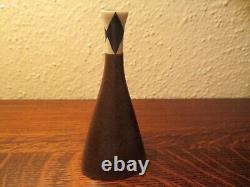
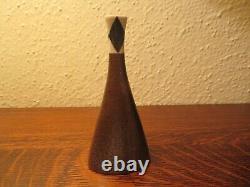
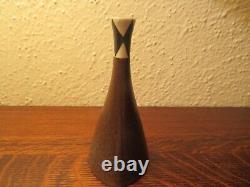
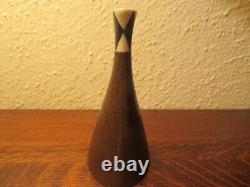
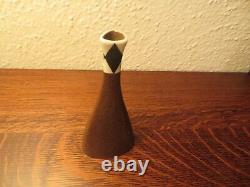
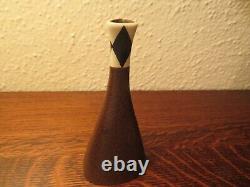
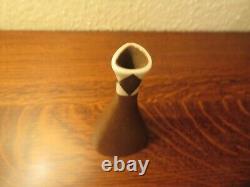
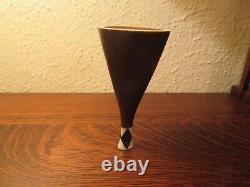
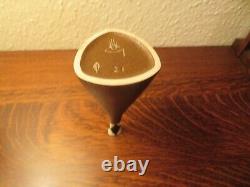
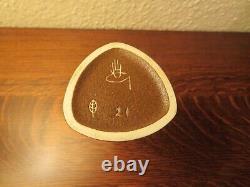
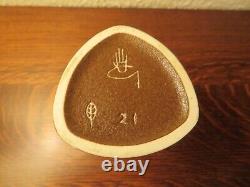

Swedish MCM Stoneware, Gustavsberg, Karin Björquist, Sleek Farsta Studio Bud Vase. The history of pottery and porcelain manufacturing southeast of Stockholm goes back to the 17th century, when the nobleman Gustaf Gabrielsson Oxenstierna established a brick factory. After his death, his wife Maria Sophia de la Gardie named the district around the factory after him; thus Gustavsberg was born. De la Gardie's efforts to recruit ceramic masters from Holland to establish a porcelain factory were unsuccessful. In the 19th century, Herman Öhman tore down the brick factory and started a porcelain factory on the site in 1826.
In the mid-19th century, Samuel Godenius took over the Gustavsbery pottery production. By the end of the century, the factory had become a large producer of bathroom porcelain and art pottery. In the 20th century, Gustavsberg achieved world renown as a center for high quality artistic stoneware. Under his leadership, Gustavsberg introduced new lines of functional tableware. After his initial success with tablware, Kåge presented his "Farsta Set" of exclusive ceramic works at the Stockholm Exhibition of 1930.By 1942, he established the Farsta Studio at Gustavsberg. Thereafter, Gustavsberg most exclusive stoneware was marked with the Farsta Studio Hand mark.
In the 1930s and 1940s, he worked closely with Kåge on Gustavsberg's faience lines before succeeding him as Artistic Director in 1949. During Lindberg's tenure as Artistic Director, other important artists were associated with Gustavsberg, including Lisa Larsson and Karin. Karin Björquist came directly to Gustavsberg from her studies at "Konstfack" and stayed on for 40 years. Some of her most recognizable work for Gustavsberg date from the 1950s and 1960s. By the 1970s and 1980s, Gustavsberg began to suffer financially due to lower cost production elsewhere. This sleek bud vase is the work of. Karin Björquist for the Gustavsberg Farsta Studio line. It likely dates from the 1950s since she produced the same form in 1952 in her blue and white "Indigo" line. This bud vase has a distinctive texture brown glaze, with black diamond decoration on white at the top. The piece is very well marked with the hand-incised Farsta studio hand, a leaf monogram that can be found on other. Björquist pieces from this era. The piece is also marked with a stamped incised number 21, which probably refers to the model/form number. The dimensions of this vase are approximately 5.25 inches high, 2.5 inches wide at the base, and just 0.75 inches at the mouth. This first quality piece is in excellent original condition, with no observed flaws. Please see the photos for further details on condition. The bulk of my collection is Danish stoneware from the 1920s into the 1970s. The bulk of my Danish collection consists of Arne Bang, Saxbo, Jais Nielsen, Nils Thorsson, Erik Hjorth, and Ejvind Nielsen. I have done extensive research on these and other artists and workshops and would be happy to share that with interested buyers. I also have substantial collections of American, French, Belgian and other 20th century northern European art pottery. Over the coming months I will be listing a wide range of pieces from my collection. Please check out my other listings and add me to your list of saved sellers to receive notification of new listings.
